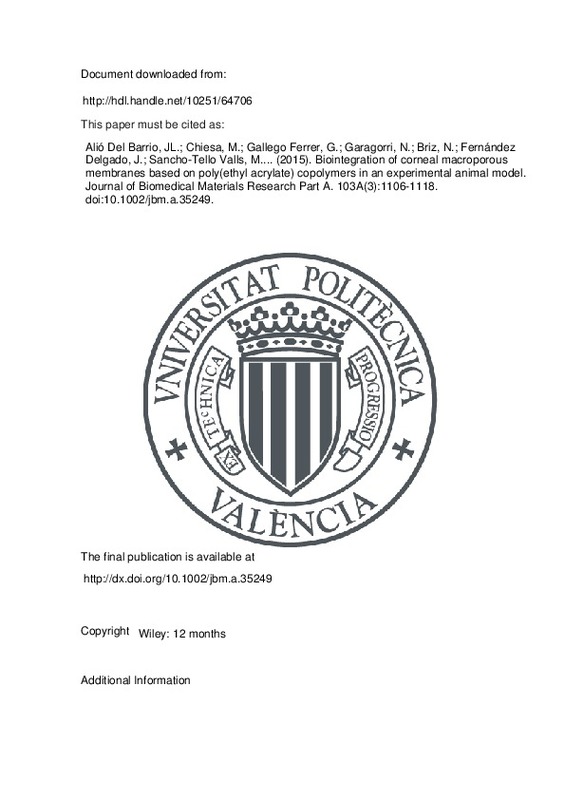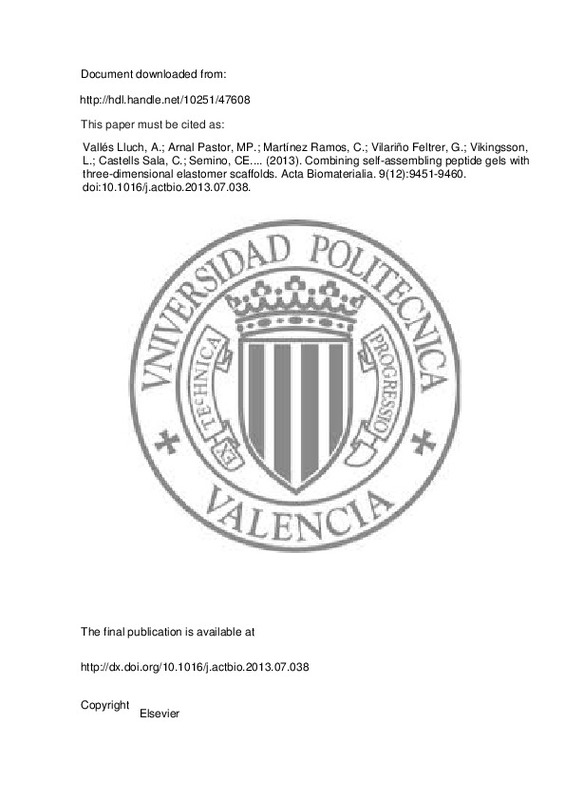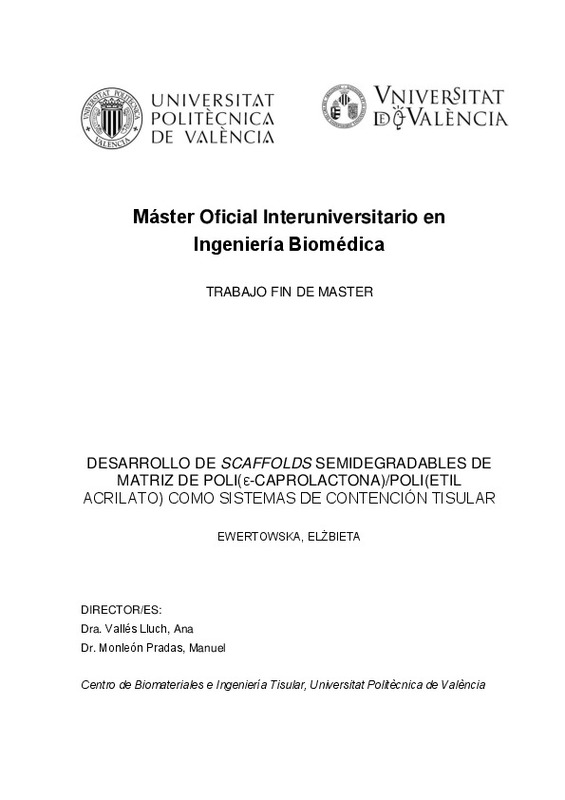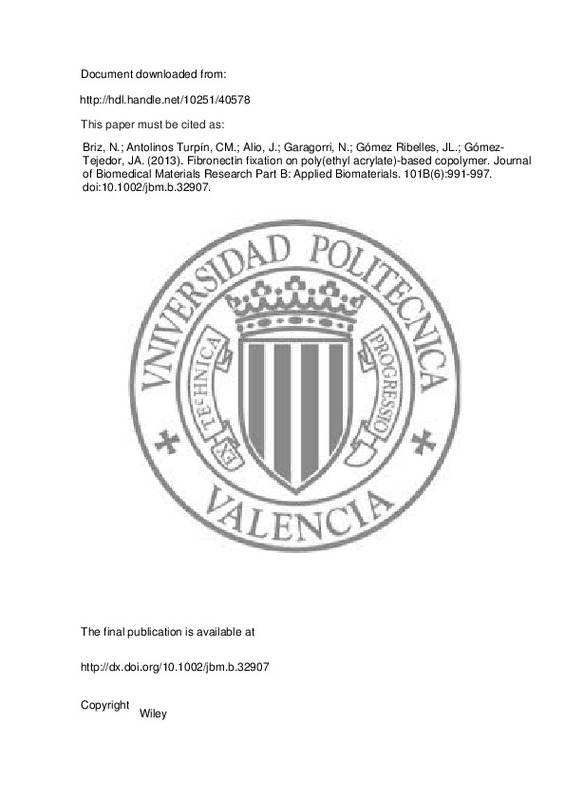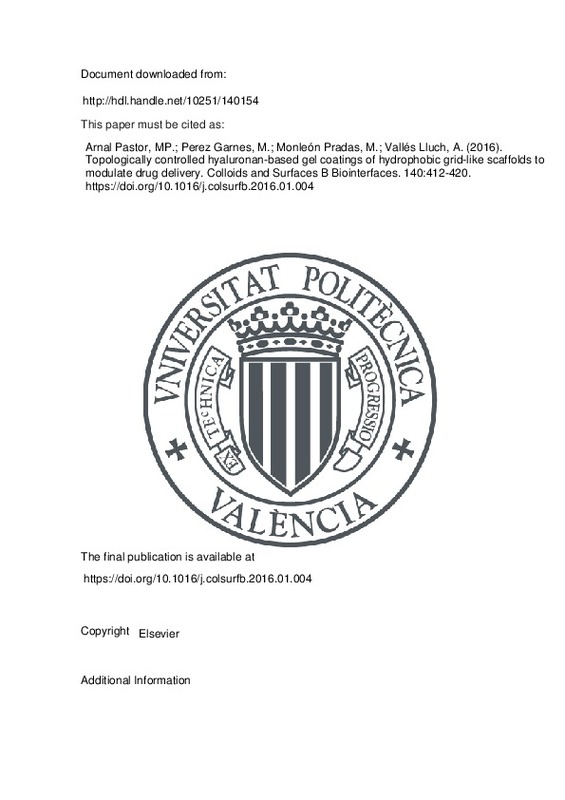

Listar por palabra clave "Poly(ethyl acrylate)"
RiuNet: Repositorio Institucional de la Universidad Politécnica de Valencia
- RiuNet repositorio UPV
- :
- Listar por palabra clave
JavaScript is disabled for your browser. Some features of this site may not work without it.
Buscar en RiuNet
Listar
Mi cuenta
Ayuda RiuNet
Admin. UPV
Listar por palabra clave "Poly(ethyl acrylate)"
Mostrando ítems 1-8 de 8
-
Alió del Barrio, Jorge L.; Chiesa, Massimo; Gallego-Ferrer, Gloria; Garagorri, Nerea; Briz, Nerea; Fernández Delgado, Jorge; Sancho-Tello Valls, María; Carda Botella, Carmen; García-Tuñón, Ignacio; Bataille, Laurent; Rodríguez, Alejandra; Arnalich Montiel, Francisco; Gómez Ribelles, José Luís; Antolinos Turpín, Carmen María; Gómez Tejedor, José Antonio (Wiley: 12 months, 2015-03)Currently available keratoprosthesis models (nonbiological corneal substitutes) have a less than 75% graft survival rate at 2 years. We aimed at developing a model for keratoprosthesis based on the use of poly(ethyl acrylate) ...
-
Vallés Lluch, Ana; Arnal Pastor, María Pilar; Martínez Ramos, Cristina; Vilariño Feltrer, Guillermo; Vikingsson, Line; Castells Sala, Carla; Semino, Carlos Eduardo; Monleón Pradas, Manuel (Elsevier, 2013-12)[EN] Some of the problems raised by the combination of porous scaffolds and self-assembling peptide (SAP) gels as constructs for tissue engineering applications are addressed for the first time. Scaffolds of poly(- ethyl ...
-
Ewertowska, Elzbieta (Universitat Politècnica de València, 2016-05-19)[EN] Nowadays, numerous technologies from the field of tissue engineering are in continuous development of new different biomaterials with one goal to adapt each product to the specific need of one individual. Taking into ...
-
Briz, N.; Antolinos Turpín, Carmen María; Alio, J.; Garagorri, N.; Gómez Ribelles, José Luís; Gómez-Tejedor, José Antonio (Wiley, 2013-08)The aim of this paper is to quantify the adhered fibronectin (FN; by adsorption and/or grafting) and the exposure of its cell adhesive motifs (RGD and FNIII7-10) on poly(ethyl acrylate) (PEA) copolymers whose chemical ...
-
Lozano Picazo, Paloma; Perez Garnes, Manuel; Martínez Ramos, C.; Vallés Lluch, Ana; Monleón Pradas, Manuel (Wiley, 2015-02)[EN] Semi-degradable materials may have many applications. Here poly(ethyl acrylate) and poly(ϵ-caprolactone) were combined as semi-interpenetrated networks, and thoroughly characterized in terms of final composition, ...
-
Perez Garnes, Manuel; Monleón Pradas, Manuel (Elsevier, 2017)[EN] Semi-biodegradable copolymer networks derived from two immiscible components, a hyaluronan derivative (methacrylated hyaluronan) and poly(ethyl acrylate), have been developed for soft tissue engineering applications. ...
-
Sabater i Serra, Roser; León-Boigues, Laia; Sánchez Laosa, Antonio; Gómez Estrada, Luis; Gómez Ribelles, José Luís; Salmerón Sánchez, Manuel; Gallego-Ferrer, Gloria (Elsevier, 2016-12-01)Poly(ethyl acrylate) (PEA) induces the formation of biomimetic fibronectin (FN) (nano)networks uponsimple adsorption from solutions, a process referred to as material-driven FN fibrillogenesis. The ability ofPEA to organize ...
-
Arnal Pastor, María Pilar; Perez Garnes, Manuel; Monleón Pradas, Manuel; Vallés Lluch, Ana (Elsevier, 2016)[EN] Scaffolds based on poly(ethyl acrylate) having interwoven channels were coated with a hyaluronan (HA) hydrogel to be used in tissue engineering applications. Controlled typologies of coatings evolving from isolated ...
Mostrando ítems 1-8 de 8

Universitat Politècnica de València. Unidad de Documentación Científica de la Biblioteca (+34) 96 387 70 85 · RiuNet@bib.upv.es


